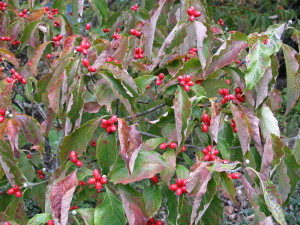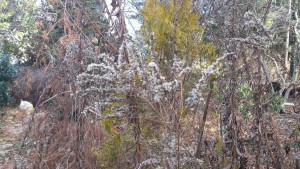At the end of each growing season, you may choose to collect seeds from favorite flowering annuals and vegetables to holdover and plant in next year’s garden. Some may be heirloom varieties that you have saved for many years because you like their productivity or flavor.
Note: these seeds should not be “hybrids”. Hybrids represent a cross between two specific parent plants resulting in such as hybrid Big Boy™ tomato, Spirit™ Hybrid pumpkin, or hybrid Wave™ petunias. Saved seeds of hybrid vegetables and flowers rarely come back “true.” Progeny won’t yield back the exact flowers, fruits, or yields in the next crop. Their resistance to diseases may also be lost.
In late fall nursery producers collect dogwood, maple, and other seeds from landscape trees or shrubs. They will clean and sow seeds in a prepared planting bed. Dormant seeds will be chilled (called “vernalization”) in the ground over winter and germinate next spring. Eventually, seedlings may become new woody plants or serve as rootstock upon which specific cultivars (varieties) of dogwood or maple are grafted or budded onto.
If you are saving wildflower seeds to re-establish a meadow next spring, harvest them in fall. Seeds may be chilled in a refrigerator (for spring planting) or sow directly into a newly prepared garden bed in the fall.
To save non-hybrid seeds:
• Start by inspecting seed heads a few weeks prior to the seeds shattering. Seedheads should appear dry. Pulpy seeds (fruits) will have colored up and are starting to shrivel. Be watchful that seeds don’t blow away. If you delay a day or two too long, they may be gone.
• Big seeds are easier to save than tiny seeds. Indoors, spread the seeds out over sheets of newspaper, paper towel, or a screen mesh.
• Separate the seeds from any chaff. Small seeds may dry in 7 to 10 days. Larger seeds may take two weeks or longer.
• Store seeds in a zipper-type plastic freezer bag or in a glass jar with a screw-on lid. Baby-food and Mason jars are also excellent for seed storage. Close the lids securely. Label containers with cultivar name of each plant (flower) and record collection date of all seeds to be stored. Place the containers in either a refrigerator or freezer. You may also store them in an unheated garage, but wildly fluctuating temperatures could damage seeds.



 Posted in
Posted in 
